The rising popularity of paragliding lead to numerous schools all around the world, and the choice is big; though, there are some pointers that you should look up to when you're choosing a school in order to be certain that you've picked the right one.
Contents
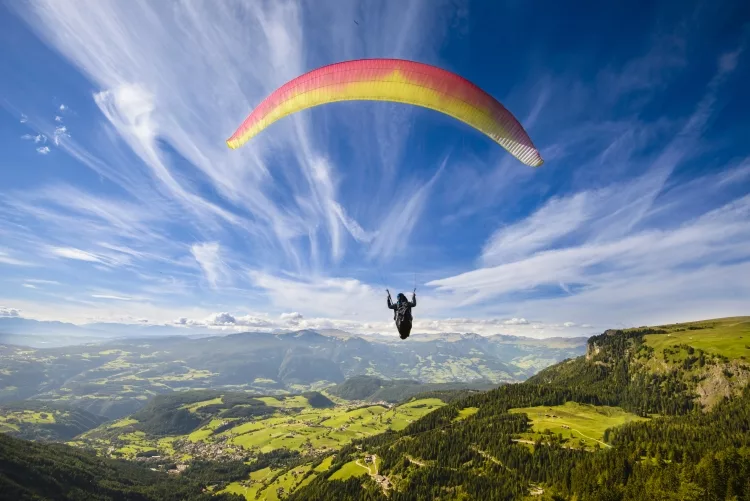
Trainer at Paragiding School
It's very important to find a paragliding school with a good reputation and experienced, licensed instructors. That way, you get to get the most of the experience.
Since becoming a licensed instructor isn't really that hard, you should do your research and search for recommendations for schools and instructors. Although paragliding is a safe and easy sport to overcome, you still need to put safety first, and you can do that best by enrolling in a paragliding school with most experienced instructors.
Don't forget to check group discount websites; that way you can find a paragliding school that's offering a significant discount, and you can save some money and invest it in paragliding equipment.
Does the school offer organized trips? Traveling is extremely important when it comes to paragliding since you do need to get to know different climate and weather conditions in order to get the right amount of experience to become a paragliding pilot.
When we look from the simplicity and ease of the flight, a game with a wing on the ground and in the air - it looks simple and easy - and it's true! But, only after you have learned all about it. Learning is not necessarily difficult and boring. Learn-to-fly is a fun game with new elements.
Before they decide to go to a paragliding school, some novice pilots try to study on their own. For them, it is difficult and dangerous, as ignorance and lack of understanding of the processes without the correct clues can lead to the deterioration of equipment and serious injuries. Those who have studied with an instructor - a consistent approach to teaching from simple to complex with competent instructors, only experience joy and comfort of flying in the air.
If you have the correct approach to training - there is a guarantee that you will be flying high, beautiful and most importantly - safe. Only school training with an instructor will help to learn the right paraglider management techniques that will help eliminate retraining and make you confident to manage and paragliding for long enough, and highly secure.
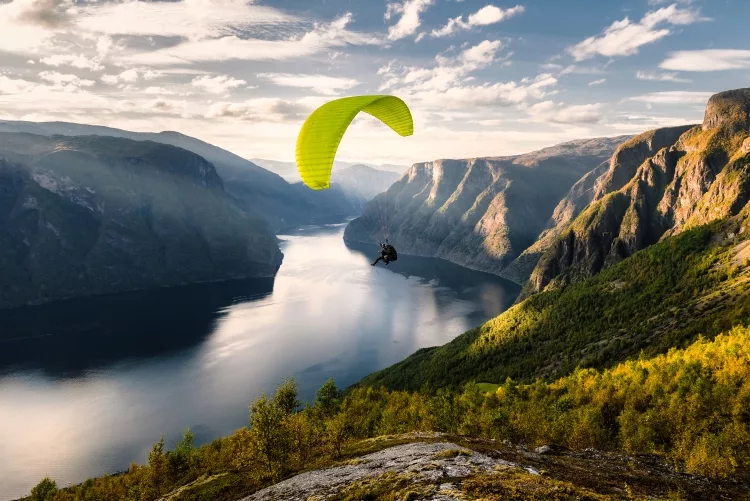
Lesson at Paragliding School
KEY FEATURES
- The training is consistent with the constant supervision of an instructor. As a consequence - the process of learning takes place much faster.
- The group is constantly going planning and debriefing.
- The training is safer since you are being supervised by a certified supervisor.
- Training takes place with a certified gear (Wing, suspension, reserve parachute, helmet, radio etc).
- During training, you'll be able to understand how the wing and other equipment works - before you start to fly on your own. It is easier to buy the right equipment with the understanding of its capabilities.
- After the training, you will be able to pass an internal exam to confirm your skill and get the relevant documents as a pilot.
- The paragliding schools constantly make paragliding trips to different events (events, festivals etc) in various flight seats.
- The time spent on training will be compensated by the beautiful and safe flight.
- In the paragliding school, you have the opportunity to gain the knowledge from experienced pilots and improve your skills by looking up to them.
- During training, you will learn how to use navigation devices, radio, and other equipment.
- The paragliding is not just about preparing your paraglider and take off - you have to have the knowledge of mandatory safety items, which is something you might not learn on your own.
- Flying in a group - That is always fun!
- Desire. This is the most important and it is - an integral part.
- Contact the school and check terms and conditions of classes.
- You must be at least 18 to enroll (or 16 with parental consent).
- Understand that if you want to become a paragliding pilot, you will need to purchase necessary equipment.
Although paragliding is not the most expensive hobby, it does require investment, both time, and money.
Most of the paragliding schools have developed an internal method of learning based on the experiences and practices of other schools, instructors and the recommendations of international standards (PARA PRO, Kulp SD- 88 ), which takes into account the physical and mental state of the future pilot.
Preparation of the pilot is consistent, and skills test will be evaluated by other instructors, which will confirm the level of training of pilots. After completion of training, a pilot can receive an international certificate - paraglider pilot 3rd category, allowing for independent paragliding and giving the right to fly to other countries.
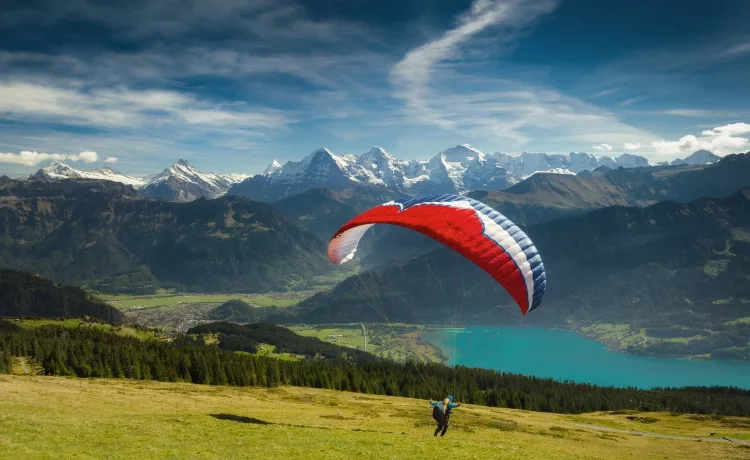
Learning at Paragliding School
Learning consists of several stages. Each stage - a theoretical and practical part (training) consists of:
After the training, you will be richer for experience and knowledge and you will:
• understand the weather conditions
• be able to assess aerology
• understand the basics of aerodynamics
• manage the wing - both on the ground and in the air
• be able to fly in the dynamic and thermodynamic flows
• carry out the landing, including the limited area
• be prepared for the main actions in emergency situations
• carry out flights in the group
Informative course in paragliding school involves the basic practice of paragliding management (on the ground), and introduction to basics of paragliding with a possibility for a candidate to have his or hers first flight at small attitude (up to 5 meters) if the weather conditions are allowing that.
Informative training is for everyone who is not sure if they want or are able to become a paragliding pilot.
- equipment
- transport
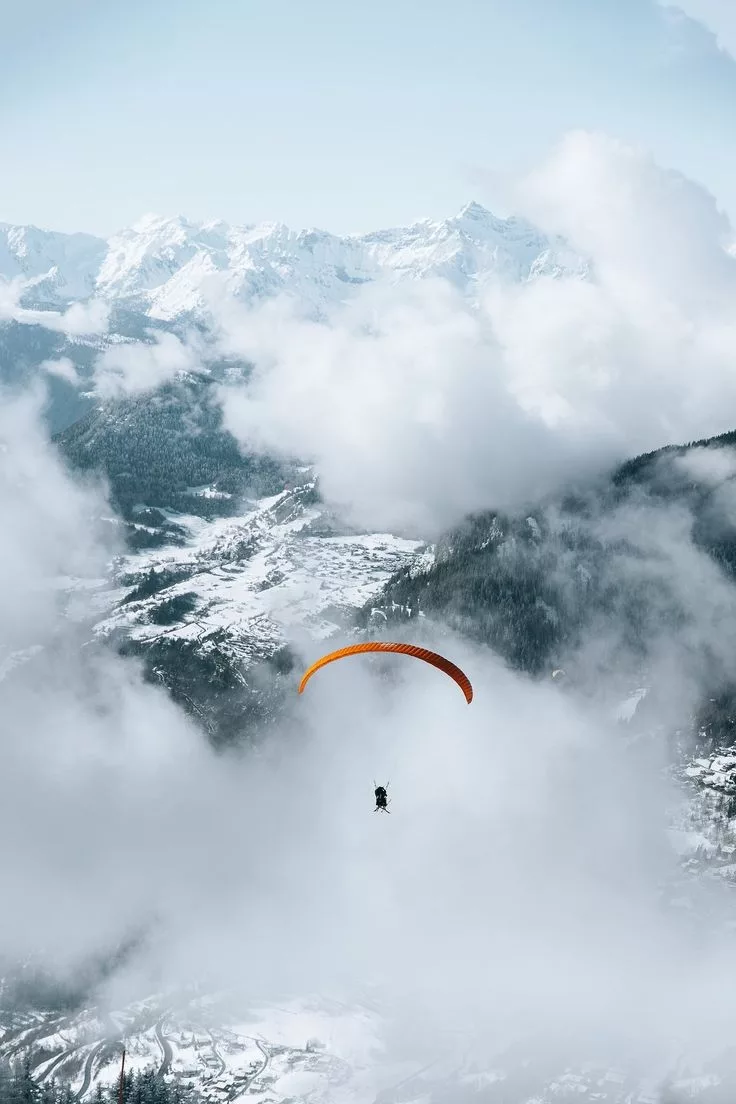
Paragliding basic course takes a flight time of 10-15 days to approximately 1 month of training. It depends on the student's skills and weather conditions. Usually, the learning process takes place in paragliding sights where competitions are being held.
When training in most schools, you are provided with certified equipment (paraglider, harness, rescue system, radio, helmet and flight instruments). Also, insurance is included, along with books on aerodynamics and meteorology, and most important - knowledge and experience of instructors.
The goal is to get basic skills of flying on simple grounds, doing short flights on small height, keeping the glider in the air, managing direction, takeoff, maintaining the direction of the glider and doing mild turns.
Basic training usually includes two levels: PP1 and PP2.
The goal of this training is that trainee learns to fly in simple sights; by doing low flights trainee is overcoming the basic skills of flying in necessary boundaries of security (keeping the glider in the air, managing direction, takeoff, maintaining the direction of the glider and doing mild turns).
The second phase of this training consists of flying at medium and high altitudes, where the student is practicing flying at higher altitudes to overcome a possible fear of heights and performing of light turning off 360 degrees. Increasing the height of the flight is being carried out gradually in accordance with the abilities of students.
During this phase of training in paragliding school the student is mastering the technique of takeoff, of the position of the body to fly a paraglider, performing mild maneuvers and landing technique in a certain field.
Mastered segments after this level is:
• Takeoff
• turning with controls
• turning by changing gravity
• landing in a given field and
• flight rules in the air
In this part of the training, student performs the takeoff, sailing on a slope and low thermals, sharper turns controls, turning with his/hers body - by changing gravity, rules of the air on a slope, slow flight, avoiding breakage of buoyancy, access circle for landing.
Advanced training includes two levels - PP3 and PP4
The goal of Para-pro-3:
• slow flight,
• the technique of sailing on a slope and to lesser thermals,
• flight rules on a slope,
• priority of movement in the air and
• avoiding breakage lift and landing technique on a particular course.
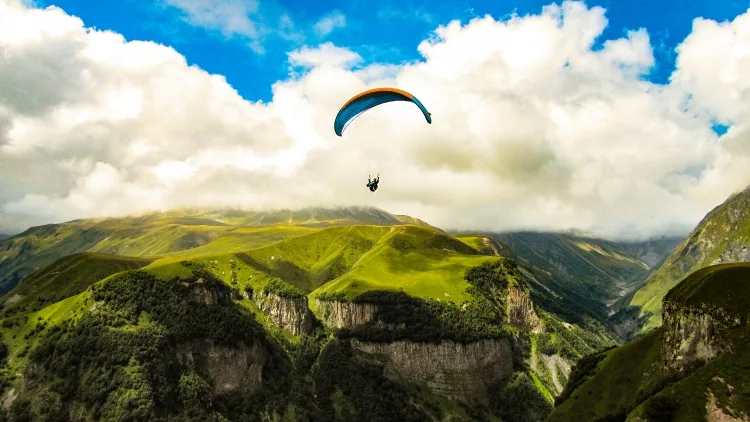
Examination for obtaining authorization for paragliding instructor can access a person who:
- are over 18 years of age,
- has paraglider pilot license for at least two years,
- has total a minimum of 100 hours of flight with a regular or motorized paraglider, including at least 10 flight with regular or motor paraglider, of which at least two overflights longer than 50km,
- has trained in an authorized training center under an approved program of training completed:
at least 25 hours of theoretical training on the subjects: Air Law, the theory of flight, aviation meteorology, construction and paraglider systems, human capabilities and limitations and methodology of training,
practical training, which includes four hours of training on the ground, 10 flights at low and medium altitudes, and five flights at high altitudes.
At the request of candidates who passed the examination for obtaining authorization for the paragliding instructor, school directorate shall issue a decision on an internship.
Within 18 months after he has passed the exam for an instructor of paragliding, an internship candidate is obliged to deliver confirmation of a training center, that he is at the training center under the supervision of a paragliding instructor, held at least 10 working days training, of which at least 5 working days of practical training, at least, 3 days of theoretical training and at least 2 working days as the head of the flight.
Based on confirmation that the candidate has finished his internship, the directorate is approving authority of paragliding instructor in the license of paragliding pilot.
The examination for acquiring authorization for tandem paragliding pilot can be accessed by a person who:
- has over 18 years of age,
- has a pilot license for at least two years,
- had total a minimum of 200 hours of flight with standard or motorized paraglider, including at least ten flights by motorized or regular paraglider,
- has completed at least 20 hours of theoretical training and, at least, five hours of practical training in an authorized training center under an approved program of training.
Before practical training, an applicant must complete the theoretical training and pass the following exams: Air Law, Theory of flight, Aviation meteorology, Construction and system of paragliders, and Human capabilities and limitations. Before moving on to training in the air, a candidate must complete theoretical training and do the tests on those subjects.
The practical training program is being performed by an instructor - a mentor, appointed by the head of the Centre for training and program approved by the Directorate. After successfully completed the practical training program, a candidate for tandem paragliding pilot will get a written confirmation from Center about the retraining, and he will get the acknowledge of this in his license of paragliding pilot. The candidate for tandem paragliding pilot must possess a certificate of medical fitness issued by an authorized aviation medical center according to EASA criteria for class 2.
 |
 |
 |
 |
Recent Post
Try the new FREE GiveAways Page
Something wrong ? Try refresh this page
Whitelist, remove adblock to see all the secrets. Once done, hit refresh button below.
 |
 |
 |
 |